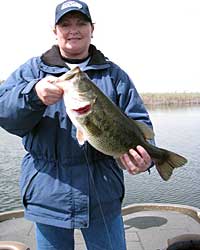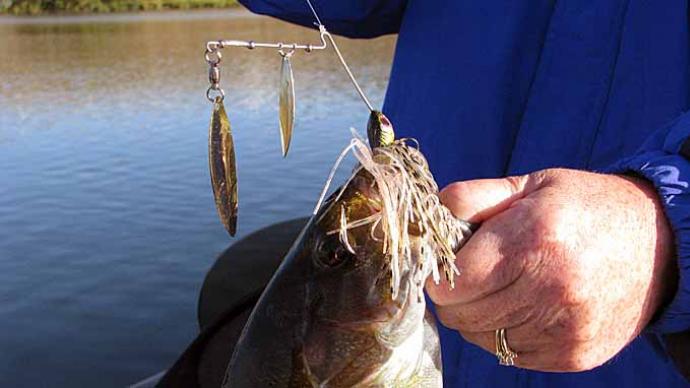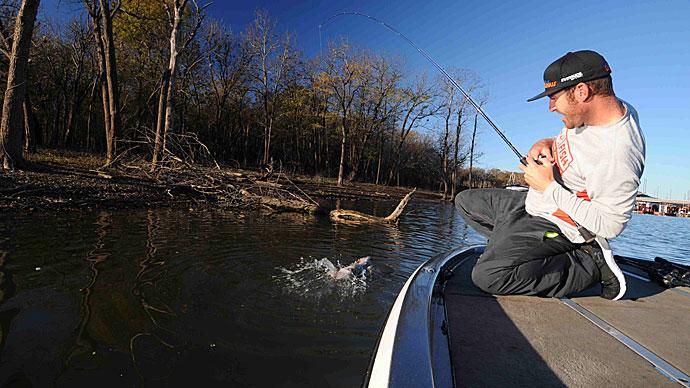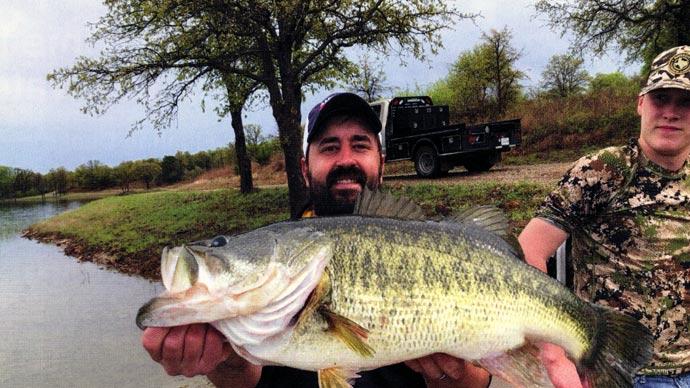
It was a cold May afternoon as my friend John and I launched his boat at Lapeer County's Lake Nepessing. It is a good-sized lake in mid-Michigan known for its chunky bass and abundant northern pike. We had both fished it several times in the past, and it is also the site of many local bass club tourneys. We motored over to a sweet spot on the lake's western end—a hump that comes up from 25 feet to 15 feet and then to 5 feet. A sheer wall of weeds had already begun to take hold. After several passes with the sonar, we positioned upwind of the hump and started to cast towards the spot. John started with a deep diving crankbait while I cast a ½ oz spinnerbait. A healthy two-pounder inhaled the blades on the second cast and came noisily to the boat. Two casts later, a good-sized northern couldn't resist. It, too, was quickly boated. Meanwhile, John had switched to a ¾ oz. spinnerbait and quickly boated a good two-pounder.
This was to be the order of the day. Whenever we would find a hump that came up from deep water, that is where the bass were staging for the spawn. Several fat females came to the blades as we slow rolled them over the deep weeds. At one point, as I reached over to check the graph, my spinnerbait was dragging across the bottom. When I reeled in the slack, a four-and-a-half-pound largemouth saw fit to scoop it off the bottom. All-in-all, twelve bass and four northerns were taken in four hours between three and seven in the evening.
Slow rolling and dead-dragging spinnerbaits is not a new technique and is, in fact, a staple in many anglers' books. It will also take big bass, much like a jig-n-pig will. Slow rolling involves using a heavy (1/2 to 1oz) spinnerbait and retrieving it slow enough that it ticks the top of weed clumps, stumps, or other low-lying cover. Many manufacturers now include these weighty blades in their lineups. Nichols makes the Pulsator, a ¾ oz bait with double willowleaf blades. Strike King has the Bottom Dweller, with small willows starting at 3/4oz up to 1 3/8oz!
Dead dragging is similar, except you are working the bait on the bottom, crawling it across cover until it is picked up. The reason for the smaller blade is to minimize the lift that heavy lines and larger blades create. Simply put, a ¾ oz spinnerbait, with big Colorado or willows, will not stay down. By increasing the weight, you have to reduce blade size.
I use two different setups for 'dozing blades. I use a 6 ½ foot medium heavy casting rod for slow rolling, with a low-gear baitcasting reel and 12-18 lb. test Maxima Line. I use a 7 ½ foot flipping stick for dead dragging, with a Shimano Curado loaded with 18-20 lb. test.
I fish it just like I would a jig-n-pig. Another lure I like to use for slow rolling is a twin spin. These hybrid spinnerbait/jigs are excellent drop baits, and the small #2 Colorado or Indiana blades keep it on the bottom. On all these baits, I like to put a pork or plastic pork trailer on. I use pork such as Uncle Josh's Big Daddy and Jumbo Pork frogs in colder weather. While in warmer weather, I go to plastic pork like Zoom's Super Chunk. It doesn't dry out like pork does during the hotter months of the year.
I will slow roll all year long if it's a technique that is producing. I caught my biggest smallmouth (yes, they are suckers for it, too!) while slow rolling a twin spin in 20 feet of water—five pounds of bronzeback, in the middle of October. If you haven't tried it, pick up some weighty blades, spool on the heavy stuff, and start 'dozin' the bottom with spinnerbaits. I guarantee you will up your catch rate.




